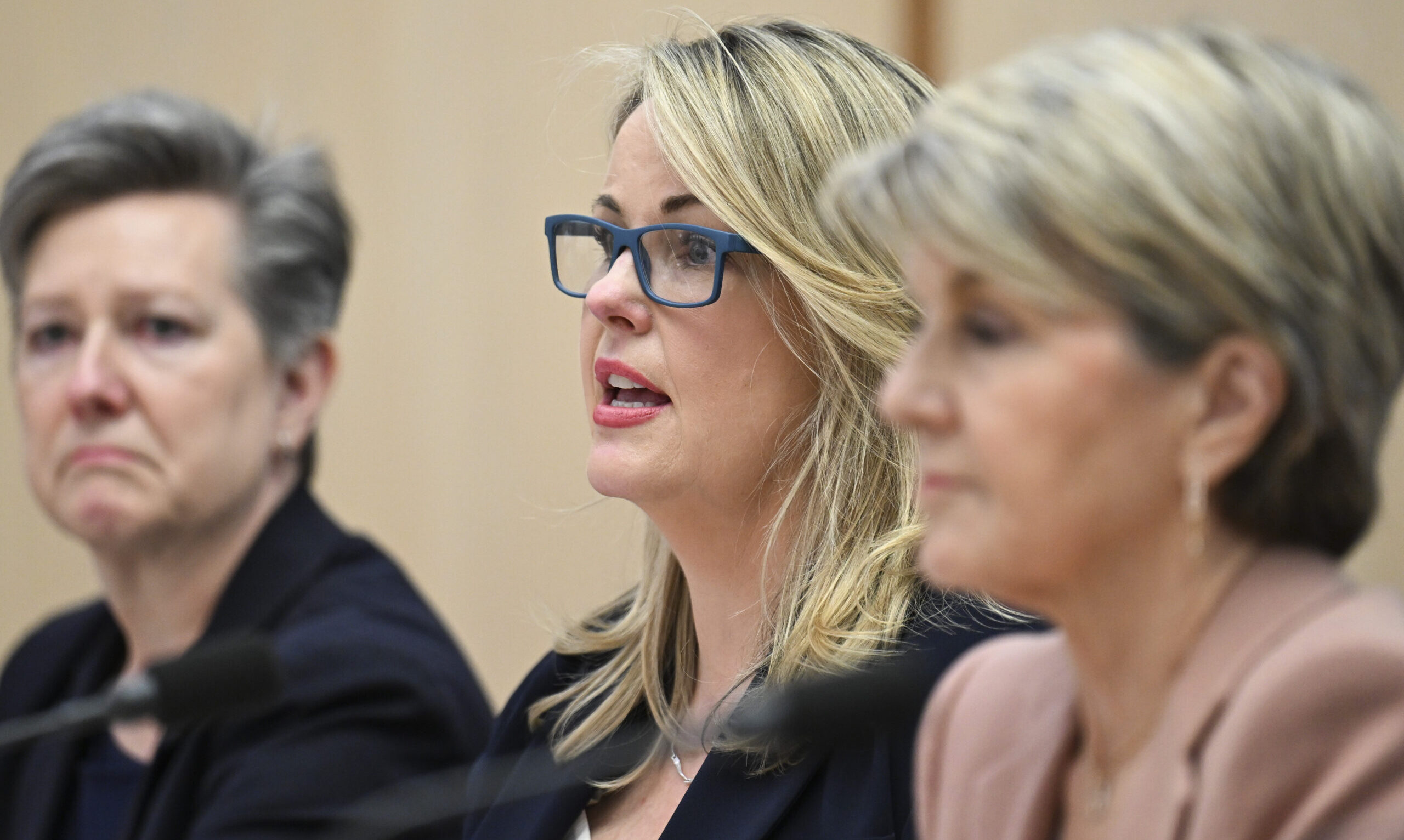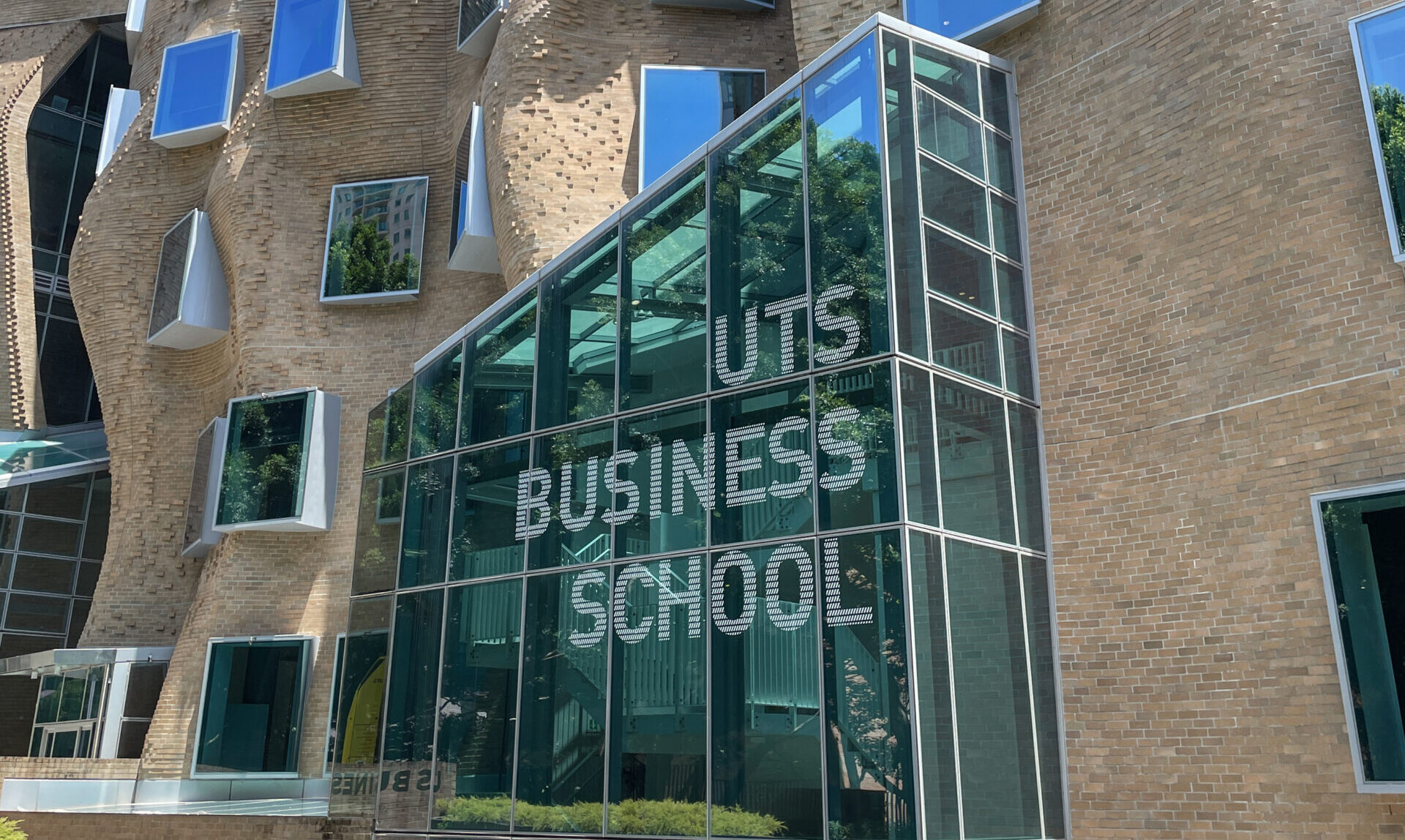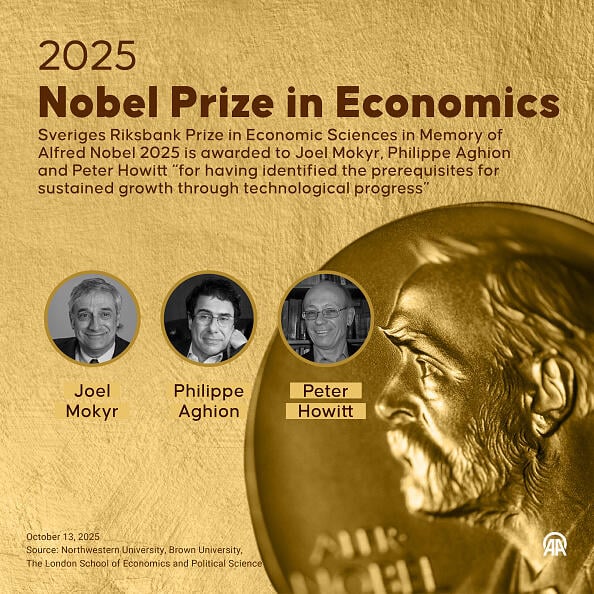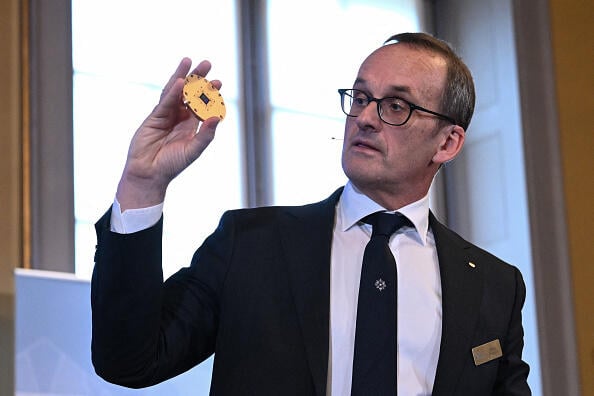Australian National University (ANU) staff feel “fundamentally disconnected” from the university’s leadership, a group of academics told a federal governance inquiry on Wednesday.
Please login below to view content or subscribe now.
Membership Login

Australian National University (ANU) staff feel “fundamentally disconnected” from the university’s leadership, a group of academics told a federal governance inquiry on Wednesday.
Please login below to view content or subscribe now.

The University of Technology Sydney (UTS) vice-chancellor has been asked whether he would consider an alternative restructure plan written by his own academics, at a NSW government hearing on Friday.
Please login below to view content or subscribe now.

Donald Trump’s defunding of scientific research and proposed new charges on migrant labor will not be enough to deter international academics from heading to America, given the country’s unparalleled willingness to reward academic talent, Radenka Maric has argued.
Since February 2022, Maric has served as president of the University of Connecticut, a six-campus public research university with a $3.6 billion annual operating budget.
The Bosnian-born engineer is arguably one of the world’s most well-traveled university leaders, having worked in seven countries in a 30-year career, including Japan (where she earned her Ph.D. at Kyoto University and worked at Toyota’s material science research division), Canada (where she led the Institute for Fuel Cell Innovation at the National Research Council Canada), and Italy (where she was a visiting professor at Polytechnic University of Milan on a Fulbright scholarship).
Having joined Connecticut as a professor of sustainable energy in 2010, Maric was appointed vice president for research in 2017 and took the top job five years later—an achievement she believes would not have been possible in any other country.
“As someone born in Bosnia without a U.S. college degree, I would never have been made a university president in Japan, Italy or even Canada,” argued Maric, who studied at Belgrade University in Serbia, where she later worked as a junior scientist.
“I don’t have that traditional academic pedigree required by some countries. I didn’t study at Harvard—I have a ‘Japanese Harvard’ Ph.D., but who really cares about my Japanese degree—nor have I been a provost or dean at a big U.S. university,” she continued.
“But American universities don’t care if you studied in Italy or Serbia—they are only focused on excellence in science and innovation, which means ‘what is your h-index?,’ ‘where have you published?’ and ‘how many people have you brought with you on your journey?’” Maric said.
Despite uncertainty over federal science funding—with several national agencies facing cuts of about 50 percent to their budgets next year—the academic meritocracy promised by U.S. universities will continue to appeal to international researchers, Maric believes.
“That is what is powerful about American academia. As long as the American dream is there—that people like me can make it on their own merits—then America will be a magnet for talent. Crises will come and go,” she said.
The current uncertainty over funding has undoubtedly caused problems, Maric explained, while there are growing concerns over plans to charge a $100,000 fee for H-1B skilled worker visas, up from $7,000—a move that would make it much more difficult for U.S. universities to employ foreign Ph.D. students or postdocs.
On the likely damage of Trump’s recent higher education policies, Maric said, “It depends how long this lasts, but America has a great capacity to resituate itself very quickly. If you compare how the U.S. pivoted after the 2008 financial crisis, it came back much quicker than any other nation.”
Despite her evident enthusiasm for her adopted homeland, Maric said she was also inspired by her time in Japan. “This was the 1990s and I was the only woman doing a Ph.D. at Kyoto’s engineering school. I stayed for 12 years there, so it wasn’t just the language that I learned but the culture. There is an immense amount of care in how everything is done, so I applied this to my career by thinking, ‘how can I improve my skills?’ or ‘how can my research get better?’
“When I was in Japan, it was constantly stressed that there was no great science if it didn’t lead to great technology. And there is no great technology without a product, and there is no product without a market,” Maric explained of her approach to applied science—she worked in the field of battery technology for Toyota and later Panasonic before leaving to join a start-up in Atlanta.
“The most important thing about Japan is kata—a way of doing things in a particular way. There is a natural tendency to do things in a certain way and there is a desire to protect their culture, so eventually I knew I had to leave,” reflected Maric on her leap from Toyota to the U.S. start-up world.
Recruited to lead a battery fuel research group in Vancouver, Maric eventually headed to Connecticut—a state with long-established defense and manufacturing industries, in which the university now plays a crucial research role.
“Since 2010 the state has been recruiting faculty in renewable and environmental sustainability, including CO2 capture, so I’ve been part of this, but the history of manufacturing goes back to the mid-19th century when bicycle companies had their first factories in Connecticut,” Maric said.
Her university’s willingness to recruit someone with an eclectic CV—including stints in corporate R&D, academia and start-ups covering three continents—then promote them to the top job is a good example of why American academia will continue to thrive, despite the current challenges, Maric said.
“I am not a traditional person, but I was always a hard worker who sought to improve myself and bring people along with me whenever I could. Not many foreigners—whatever their expertise or experience—will become university presidents, but it is possible in America,” she said.

Two American academics were among the three winners of this year’s Sveriges Riksbank Prize in Economic Sciences in Memory of Alfred Nobel. They were given the prestigious award “for having explained innovation-driven economic growth,” the Royal Swedish Academy of Sciences announced Monday morning.
Joel Mokyr, the Robert H. Strotz Professor of Economics at Northwestern University, will receive half the roughly $1.6 million prize “for having identified the prerequisites for sustained growth through technological progress,” according to the announcement.
Peter Howitt, a professor emeritus of economics at Brown University, will split the other half of the award money with Philippe Aghion of Collège de France and INSEAD and the London School of Economics and Political Science, “for the theory of sustained growth through creative destruction.”
“The laureates’ work shows that economic growth cannot be taken for granted,” said John Hassler, chair of the committee for the Prize in Economic Sciences. “We must uphold the mechanisms that underlie creative destruction, so that we do not fall back into stagnation.”

Three academics affiliated with U.S. universities have been awarded the 2025 Nobel Prize in Physics “for the discovery of macroscopic quantum mechanical tunnelling and energy quantisation in an electric circuit,” the Royal Swedish Academy of Sciences announced Tuesday morning.
British physicist John Clarke, a professor of experimental physics at the University of California, Berkeley; French physicist Michel Devoret, professor emeritus of applied physics at Yale and a professor at the University of California, Santa Barbara; and John Martinis, also a physics professor at UCSB, will share the nearly $1.2 million prize.
They won for performing a series of experiments using an electronic circuit made of superconductors, which can conduct a current with no electrical resistance, demonstrating “that quantum mechanical properties can be made concrete on a macroscopic scale,” according to the announcement.
“It is wonderful to be able to celebrate the way that century-old quantum mechanics continually offers new surprises. It is also enormously useful, as quantum mechanics is the foundation of all digital technology,” said Olle Eriksson, chair of the Nobel Committee for Physics.

This HEPI blog was kindly authored by Chris Featherstone, Hillary Briffa, Madeleine Le Bourdon, Jeremy Moulton, Louise Pears, Anna Plunkett, Sudhir Selvaraj and Jillian Terry.
Amid the UK’s ongoing cost of living crisis and wider economic instability, equipping students with the skills they need to enter the workforce is more urgent than ever. The recent HEPI Policy Note 10 trends that will change higher education encapsulates this focus on skills development, arguing that skills development will be the foremost area of value for students, preparing them for modern employment. Employability has become a central concern, not only for students but also for universities, incentivised through league tables and recruitment strategies to demonstrate clear outcomes for graduates.
One under-recognised but vital resource in meeting this challenge is the growing group of teaching-focused academics, those appointed on education-centred or ‘teaching and scholarship’ contracts. In Politics and International Relations (IR), this group has expanded significantly over the past two decades. A recent British Academy report found that around 20% of new academic posts in Politics and IR are now teaching track roles.
These colleagues are often at the forefront of pedagogic innovation, transforming assessment design, refining marking practices, and integrating technology in ways that directly enhance student learning. Their work is central to helping students develop the transferable, applied skills that employers demand.
Innovating for Employability
One key area of innovation is the diversification of assessment formats. By moving beyond traditional essays and exams, students are given the opportunity to experiment with different ways of communicating ideas, developing critical skills aligned with real-world careers. This diversification of assessment formats also addresses the diversity of the student body in contemporary HE. There is no longer a typical student, and as such we need to increase the range of typical assessments.
At the University of York, Jeremy Moulton and Chris Featherstone offer ‘optionality in assessment’. Jeremy gives students the choice between writing a traditional essay or a policy report, bridging academic and applied outputs. Similarly, Chris enables students to choose between blogs or policy reports, allowing them to explore formats akin to journalism or content creation. This element of student choice encourages self-reflection and strategic skill development. Some students choose to strengthen familiar skills, while others test themselves in unfamiliar formats.
Artificial intelligence (AI) is a key challenge for universities, students and employers alike. With reports that 4 out of 5 students admit to using AI in their studies, this is a huge area for higher education. Addressing the challenge that AI has levelled at the sector, Jillian Terry will be one of the first cohort of LSE AI and Education Fellows, developing a strategy for embedding and fully integrating generative AI tools into students’ experiences of learning, researching, and collaborating in the sector-leading interdisciplinary module LSE100.
Meanwhile, at King’s College London, Dr Hillary Briffa has worked to reform how diverse assessment types are marked. As a ‘rubric champion’ within the Faculty of Social Science and Public Policy, she is helping to design assessment criteria that accommodate non-traditional outputs, such as podcasts and policy briefs, while maintaining academic rigour.
Teaching and scholarship (T&S) staff are not only innovating in assessment but also contributing to the scholarship of teaching and learning itself. At the University of Leeds, Dr Madeleine Le Bourdon and Dr Louise Pears have conducted research on the role of social media in teaching Politics. Their findings have shaped teaching practices within the School of Politics and International Studies (POLIS), and they have also led workshops to share insights with colleagues across the discipline. Dr Le Bourdon is also leading international research into ethical approaches to global university partnerships, further demonstrating the leadership roles T&S staff are increasingly taking on.
To promote and connect these efforts, we established the ASPIRE Network—a community for teaching-focused academics in Politics and IR. We believe that the teaching track makes a vital contribution to educational excellence, enhancing student experience, attainment, and graduate outcomes.
ASPIRE exists to share best practices, support professional development, and advocate for the recognition of teaching and scholarship colleagues across UK higher education. But we also seek to go further, calling for structural changes in how universities support and promote teaching track staff, and urging policymakers to better value the contributions these colleagues make to student success and institutional performance.
Despite their growing presence and impact, teaching track academics often face structural barriers to progression, limited access to research funding, and a lack of visibility in institutional decision-making. If universities are serious about improving student outcomes, enhancing graduate employability, and delivering high-quality teaching, they must do more than simply acknowledge these contributions. They must actively empower teaching-focused staff. This includes creating clear promotion pathways, offering equal recognition in strategic planning, and ensuring that reward structures value pedagogic innovation on par with research achievements. The ASPIRE network is working to address this need, advocating for improvements in progression, recognition, and reward for ‘teaching track’ academics in Politics and IR, but more is needed sector-wide. Empowering the teaching track is not just a matter of fairness; it is essential for sustaining excellence in UK higher education.
In a sector facing financial pressures, political uncertainty, and heightened expectations around graduate employability, we cannot afford to overlook the contributions of teaching-focused academics. Their work is not peripheral, it is central to ensuring that students leave university not just with knowledge, but with the skills, confidence, and flexibility they need to thrive.

A survey has found academics are working 3,256 hours a year, about double the Australian average, and are suffering worse anxiety and depression as a consequence.
Please login below to view content or subscribe now.